Content
Armada potatoes are a high-yielding variety, well suited for growing in the middle zone, the Volga region, the Black Earth Region and other regions of Central Russia. It has a pleasant taste and high starch content - up to 20%. The agricultural technology is simple, but when growing, you need to take into account that the variety is not drought-resistant.
History of selection
Not much is known about the history of the origin of the Armada potato variety. It appeared in Russia relatively recently, so it is not as widespread as other varieties.
According to some sources, its name is associated with the Armada - the Spanish fleet, which was considered invincible. As a result, it was defeated by English forces at the end of the 16th century.
The crop is not included in the register of selection achievements. However, many summer residents have already appreciated Armada for its high starchiness and excellent taste.
Description of Armada potato variety
The description of the variety provides data on the characteristics of the bush and tubers. The main characteristics are presented below.
Bush
The Armada potato bush is quite tall, the stems are erect and can reach 1 m. The leaves are bright green, with carved edges. The flowers are five-petaled, can be lilac, pink, purple, and sometimes have cream shades. Appear in mid-summer. About a month after the end of flowering, you can harvest.
Tubers
Armada potato tubers have an elongated oval shape. The color is light yellow, the surface is smooth and pleasant. The species is marketable, which allows you to cultivate the crop not only for yourself, but also for sale.
The eyes are few, they are so small that they are almost invisible. The flesh is cream-colored and does not darken when cut. Contains a large proportion of starch - from 18% to 20%. On each Armada potato bush, from 8 to 14 root crops appear. They have medium and large sizes, weighing 160-200 g.
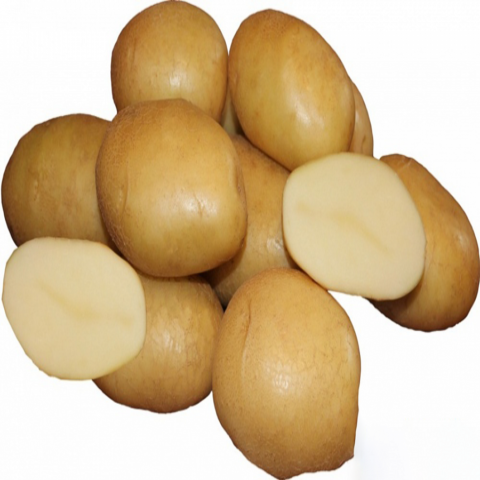
Tubers have an attractive presentation
Characteristics of Armada potatoes
Potatoes of this variety have very good taste. Tubers are also valued for their attractive presentation. The culture takes root well in different regions, so it can be grown almost everywhere.
Taste qualities of Armada potatoes
Armada potatoes have a pleasant taste. Tubers contain up to 20% starch. Therefore, the pulp is crumbly and boils well. It is used to prepare various dishes and products:
- mashed potatoes;
- starch;
- potato pancakes
These potatoes are also suitable for baking. But it is better not to use it for frying - the pieces do not hold their shape well.
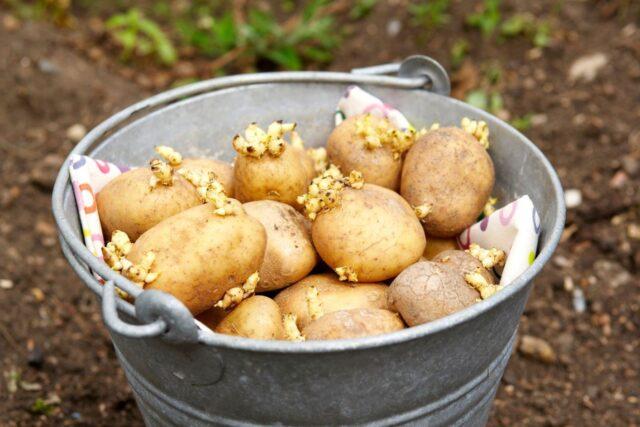
Round, elongated tubers
Ripening time
In terms of ripening time, Armada potatoes are classified as early ripening varieties. From the moment of emergence of seedlings to harvesting, 65-70 days pass.If you plan planting for the May holidays, you can dig up the tubers in the second half of July. Therefore, in the southern regions two crop rotations are allowed.
Productivity
The yield indicator is very high and amounts to 600-700 kg per hundred square meters. This is due to the large tubers that appear in abundance on every bush. To achieve such results, it is necessary to organize periodic watering and fertilization. Armada potatoes should be grown only on fertile soils with a loose structure.
Where is it grown?
Most regions of Central Russia are suitable for cultivating Armada potatoes:
- middle lane;
- Volga region;
- Chernozem region;
- southern regions.
The ripening time of this variety is short, so it can be grown in other territories, for example, in the Urals and Siberia.
Disease resistance
The Armada potato variety is quite resistant to cancer. But it may suffer from golden potato nematode. Infection with late blight, scab and other fungal infections is also possible. The plant is not resistant to Alternaria and mosaic virus.
Therefore, after the emergence of seedlings 10-15 cm high, it is recommended to treat with fungicides:
- "Quadris";
- "Maksim";
- "Prestige";
- "Abiga Peak".
Colorado beetles, aphids and other insects are controlled using insecticides:
- "Aktara";
- "Fitoverm";
- "Match";
- "Green Soap"
It is advisable to carry out processing of Armada variety potatoes in cloudy weather. If it is sunny outside, spraying is planned for late evening. In this case, the weather should be without rain and strong winds.
Advantages and disadvantages
Armada potatoes are valued for their excellent taste and boiliness. It is used for making purees and baking together with the skin in the oven, including on a wire rack.The variety is very productive and long-lasting, so it is suitable for growing for commercial purposes.
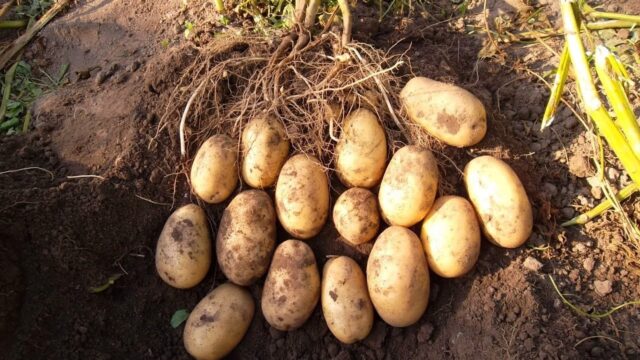
Productivity often reaches 700 kg per hundred square meters
Pros:
- excellent taste;
- increased starch content;
- transportability;
- high keeping quality;
- resistance to certain diseases;
- attractive presentation
Minuses:
- may suffer from Colorado potato beetles;
- at temperatures below -3 °C the taste deteriorates;
- may suffer from Alternaria, mosaic;
- no resistance to drought.
Landing rules
Planting is planned for the beginning of May, and if return frosts are possible, for the middle of the month. At the same time, they begin to prepare the soil in April. The area should be illuminated, without stagnant water. The soil is quite fertile and loose; sandy loam soil is best.
When choosing a location, crop rotation rules are also taken into account. The optimal precursors for potatoes are legumes and green manure (for example, mustard). The worst option is representatives of nightshade and pumpkin plants.
Two months before planting, the soil is dug up and fertilized with compost or humus (a 1 m bucket2). If the soil is clayey, add sawdust or sand (1 kg per 1 m2). It is also worth considering that Armada potatoes grow well in neutral soils. Therefore, if the environment is acidic, you will need to add wood ash or dolomite flour in an amount of 200 g per 1 m2.
A month before planting, Armada potato tubers are transferred to a moderately cool room (14-15 degrees) and laid in 2-3 layers so that light falls on them. Spray with water periodically. On the day of planting, they are treated with “Prestige”, “Quadris” or another fungicide.
When planting, follow the following pattern:
- Make several furrows at a distance of at least 60 cm.
- Dig shallow holes (8-10 cm) at intervals of 30 cm.
- Place the tubers and dust them with wood ash.
- Sprinkle with soil and water.
Features of care
Potatoes of the Armada variety are unpretentious in care. If the soil is fertile enough and the weather is warm, it will produce a very good harvest.
Experienced summer residents recommend following several rules:
- In hot weather, be sure to water at least once a week. Water is poured directly under the root, using a bucket for 2-3 bushes. To keep the soil well moistened, it is also directed into the inter-row spaces. It is important to ensure that the soil is not excessively wet, otherwise the Armada potato tubers may rot.
- Fertilizing is applied up to two times per season. When the shoots appear, water with mullein infusion diluted 10 times with water. At the stage of bud formation, complex mineral fertilizer is given. Three weeks before harvesting, you can water it with slurry and superphosphate solution (40 g per 10 l).
- After watering, the soil is loosened and weeding is done if necessary.
- Armada potatoes need to be hilled several times a season. The procedure is carried out after mass germination and 2-3 more times with an interval of three weeks.

Hilling is necessary for the crop 3-4 times per season
Harvest and storage
The harvest is harvested in mid-July, i.e. 2-2.5 months after the mass emergence of seedlings. Two weeks before this, they stop watering and cut off the tops. The day for cleaning is chosen to be dry and sunny.
First, the tubers are allowed to lie right on the bed to dry. Then sorting is carried out. Small specimens are sent for seeds; large specimens are preferably used first. The rest are to be stored:
- In the first two weeks, keep at a temperature of +15 degrees.
- Then they are transferred to storage, where the air is heated to +2-4 °C and the relative humidity is within 70%.
Conclusion
Armada potatoes grow well in the climatic conditions of Central Russia. The main advantages of the variety are high yield and excellent taste. At the same time, the tubers are quite large, marketable, the eyes are small and practically invisible. Therefore, such potatoes can be cultivated both in personal and on farms.
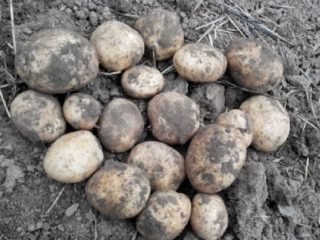
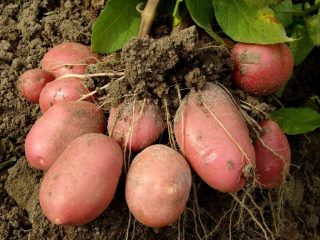
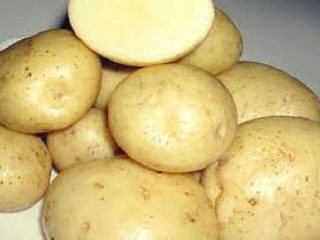
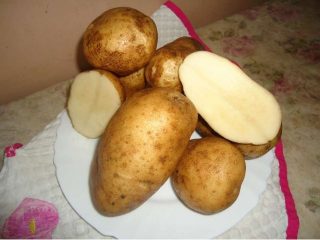
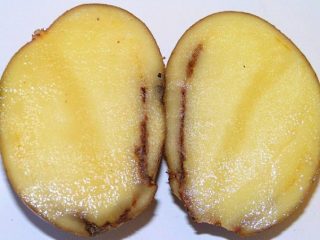
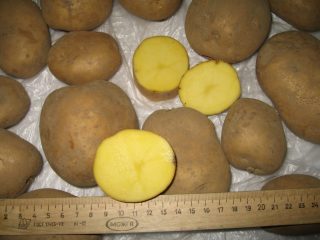
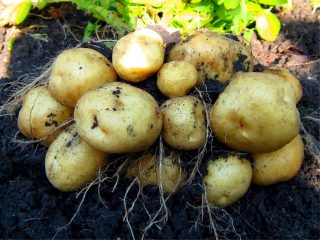
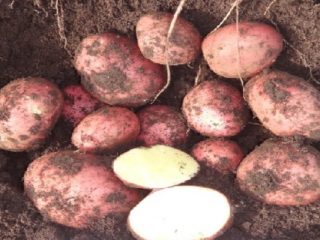
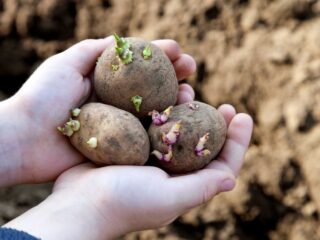
Why do you write that the history of the creation of the variety is little known, this is our Russian variety, included in the register of agricultural achievements. Look there and see everything, including the characteristics of the variety.